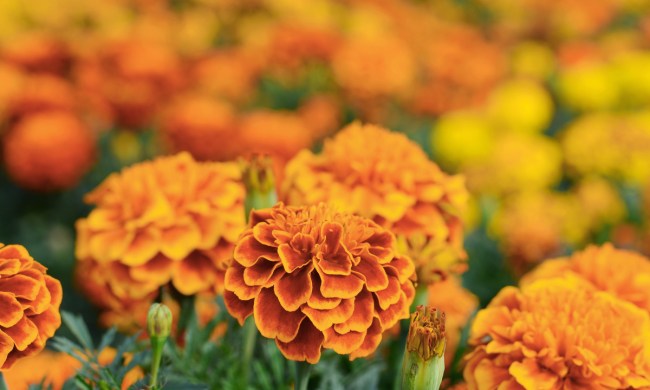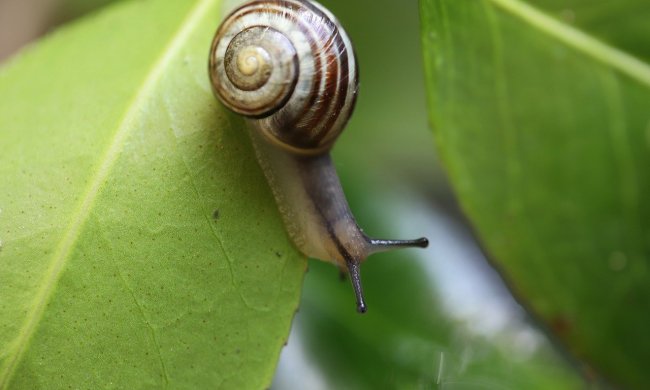Hollyhocks, known for their tall flower spikes and large, vibrant flowers, make a gorgeous addition to most gardens. Pollinators love them, and they come in a wide array of lovely colors. While they’re commonly planted alongside structures or as the main feature in a garden bed, they’re also quite versatile. If you want to add hollyhocks to your garden this spring or summer, then this hollyhock growing guide is the perfect place to start! Here’s everything you need to know to grow these flowers successfully.
Planting hollyhocks

If you’re growing hollyhocks from seeds, you can start them in late spring. Older hollyhocks can be planted in late summer or early fall. Plant your hollyhocks in rich, well-draining soil for the healthiest plants and best flowers. They can tolerate other soil types, but they thrive in loamy soil that has plenty of organic matter. Hollyhock plants grow quite tall, and they need plenty of nutrients to fuel that growth.
Full sun is best for hollyhock plants, although they can handle some shade. Be sure to position them where they will get at least 6 hours of sunlight on average each day, so that they can grow properly. In hotter regions, morning sun with afternoon shade is often better, as the more intense sunlight can scorch the leaves of young plants. Additionally, avoid planting your hollyhock under a low overhang. The full height of a hollyhock is 4 to 8 feet tall, so be sure they have enough room to grow.
Hollyhock plant care

Hollyhocks benefit from regular watering, especially when they’re young. Note that it’s still possible to overwater them, leading to root rot or fungal infections, so avoid watering them when the soil is still soaked from the last watering. Instead, water your hollyhock plants when the top inch or two of soil is almost dry. Try not to get the leaves wet, as consistently wet leaves can lead to fungal infections. Hollyhocks typically don’t need to be fertilized unless they’re growing in poor soil. In that case, early spring is the best time to give them a light dose of balanced fertilizer.
Hollyhock flowers don’t need to be deadheaded, unless you want to prevent them from self-seeding. The flowers will naturally fall off on their own once the seeds are ready, so if you want your hollyhocks to keep growing, it’s best to simply leave them alone and let them fall off naturally. After the plant has flowered and the blooms have all faded, you can cut the entire stalk down to the ground. It won’t hurt your garden to leave it in place, and some pollinators will even use the stalks as shelter during winter, but if you prefer to keep your garden neat, then it’s best to cut them down after the flowers fade, but before the weather gets too cold.
There are a few pests that may become a nuisance, but the most common ones are beetles and weevils. Hollyhock weevils are so common they’re even named after these flowers. While the damage they do is unsightly, they’re easy to deal with. Insecticidal soap and neem oil are two common solutions, and the larger size of these pests means you could remove them by hand and dispose of them in soapy water.
Are hollyhocks perennials or annuals?

Hollyhocks are actually not perennials or annuals — they are self-seeding biennials. Biennials are similar to annuals, in that they have a short lifespan and die after dropping their seeds. However, they take two years to grow instead of one. Hollyhocks are often confused for perennials, because they seem to return year after year, but this is actually due to how prolifically they self-seed. The amount of seeds they drop, and the high success rate of those seeds, mean your garden can reliably have hollyhocks for years even as the original plants die.
Due to their two-year cycle, some gardeners prefer to stagger plant them by planting seeds two years in a row. This ensures there are hollyhocks in both life stages every year, so your garden is never without flowers. However, you can also choose to plant one of the few hollyhock varieties that bloom in their first year to achieve the same effect.
Are hollyhocks toxic or safe?

The good news is that hollyhocks are considered nontoxic and safe for people and pets! They aren’t exactly edible, but if your child or pet tries to chew on a leaf, they shouldn’t suffer any major consequences.
However, gardeners with sensitive skin should note that hollyhocks can cause contact dermatitis in some people. Wearing gloves when tending to them and washing your hands after touching your hollyhock plants can protect you from an itchy and unpleasant rash. Reactions are usually mild, and symptoms can typically be treated at home with a basic over-the-counter itch relief cream. If you feel like your symptoms are more severe, it could be an allergic reaction requiring stronger relief. You should contact your doctor for advice or assistance if you haven’t had a reaction like that in the past.
These gorgeous and easy-to-grow flowers will look fantastic in your yard or garden. Whether you want to line your front porch with them or use them as the centerpiece of your garden bed, you’re sure to enjoy these beautiful flowers.




